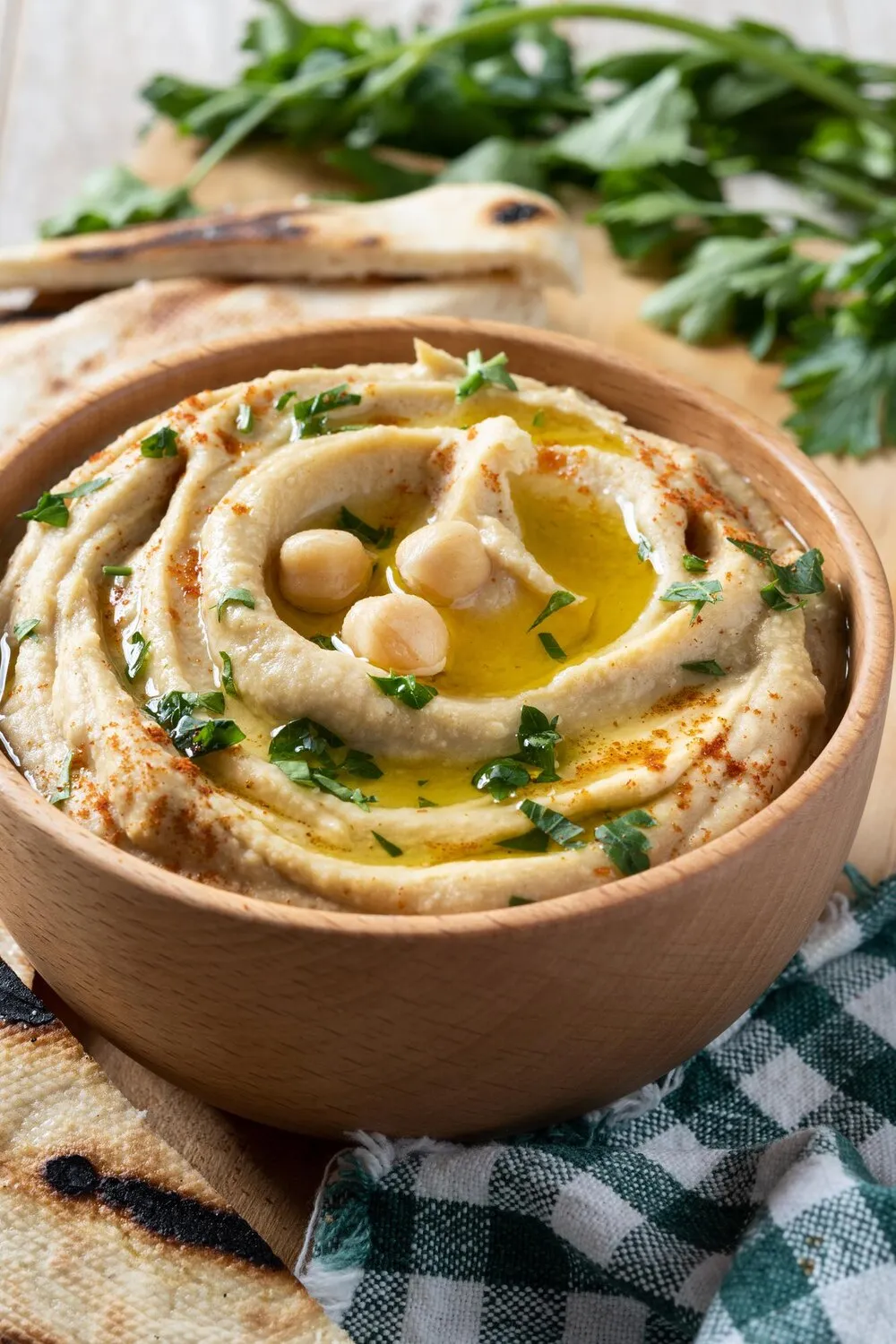
Hummus Classic
Classic hummus dish, likely with tahini, lemon juice, garlic, and olive oil, served with pita bread.
Nutrition Facts
* The % Daily Value (DV) tells you how much a nutrient in a serving of food contributes to a daily diet. 2,000 calories a day is used for general nutrition advice.
Hummus's history is deeply interwoven with the ancient cuisines of the Middle East. Chickpeas, the main ingredient, have been cultivated in the region for millennia. While the precise origin is debated, written recipes resembling modern hummus appear in 13th-century Arabic cookbooks. The dish has evolved through various cultural influences, becoming a staple across the Levant.
Hummus is more than just a dish; it's a symbol of hospitality, community, and shared culinary heritage in the Middle East. It's often served as part of a mezze spread, a collection of small dishes meant for sharing and socializing.
Social Gathering Staple
Hummus is a central element of social gatherings, family meals, and celebrations across the Levant. Sharing a plate of hummus with pita bread encourages conversation and bonding.
Culinary Identity
The origin of hummus is a source of national pride for many countries in the region, reflecting its deep cultural significance and long history.
Religious Observance
Hummus is often consumed during religious holidays and celebrations, reflecting its importance in the cultural diet.
Classic hummus offers a harmonious blend of savory, tangy, and earthy flavors, creating a creamy and satisfying experience.
The primary flavor profile is derived from the nutty, earthy taste of chickpeas, which are balanced by the rich, sesame notes of tahini. Lemon juice provides a bright acidity that cuts through the richness, while garlic adds a pungent and aromatic kick. Olive oil contributes a fruity and smooth finish, enhancing the overall texture and taste. The combination is further enhanced by salt, which balances the other flavors.
Chickpea Preparation
Soaking dried chickpeas overnight and then cooking them until they are extremely soft is crucial for achieving a smooth and creamy hummus. Some chefs even remove the outer skins of the chickpeas for an extra-smooth texture.
Tahini Quality
Using high-quality tahini made from hulled sesame seeds is essential for a rich and flavorful hummus. Look for tahini that is smooth, creamy, and not overly bitter.
Lemon Juice Freshness
Freshly squeezed lemon juice provides the best flavor and brightness. Avoid using bottled lemon juice, as it can taste artificial.
Ice Water Secret
Adding a few tablespoons of ice water while blending helps to create a light and fluffy texture.
Olive Oil Finish
Drizzling a generous amount of high-quality extra virgin olive oil on top just before serving enhances the flavor and adds a beautiful presentation.
Explore additional Middle Eastern dishes and restaurants
Explore Middle EasternDiscover top dining spots and culinary experiences in Delft.
Explore DelftLearn more about the food culture, restaurant scene, and culinary heritage of Netherlands.
Explore Netherlands